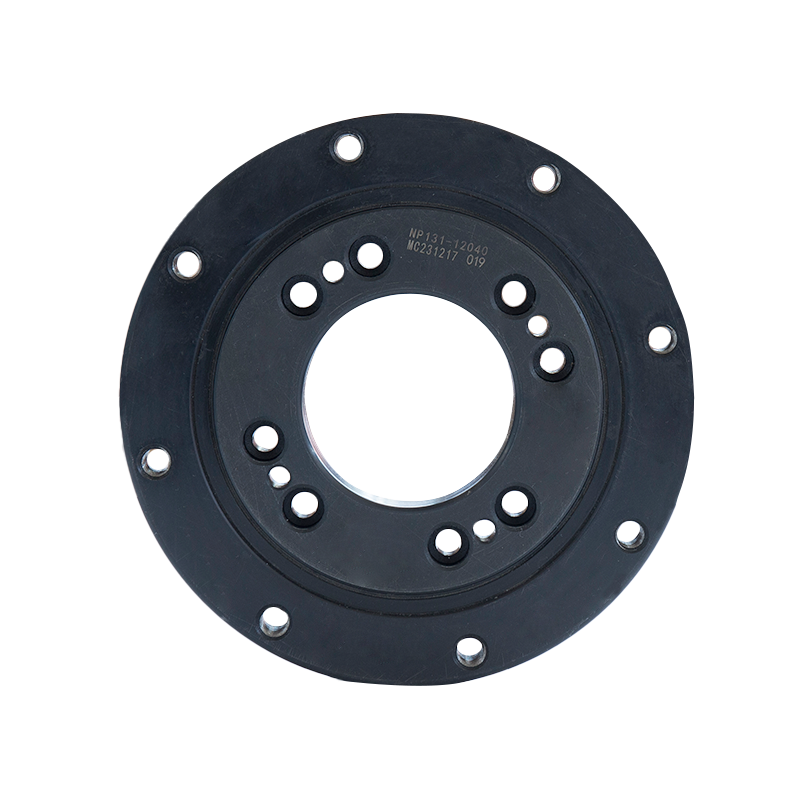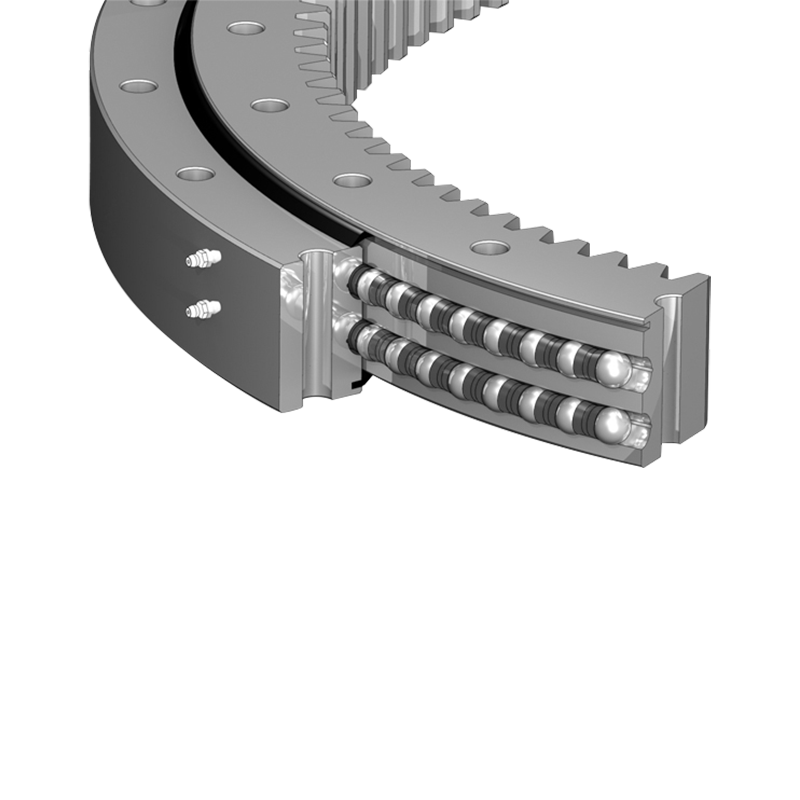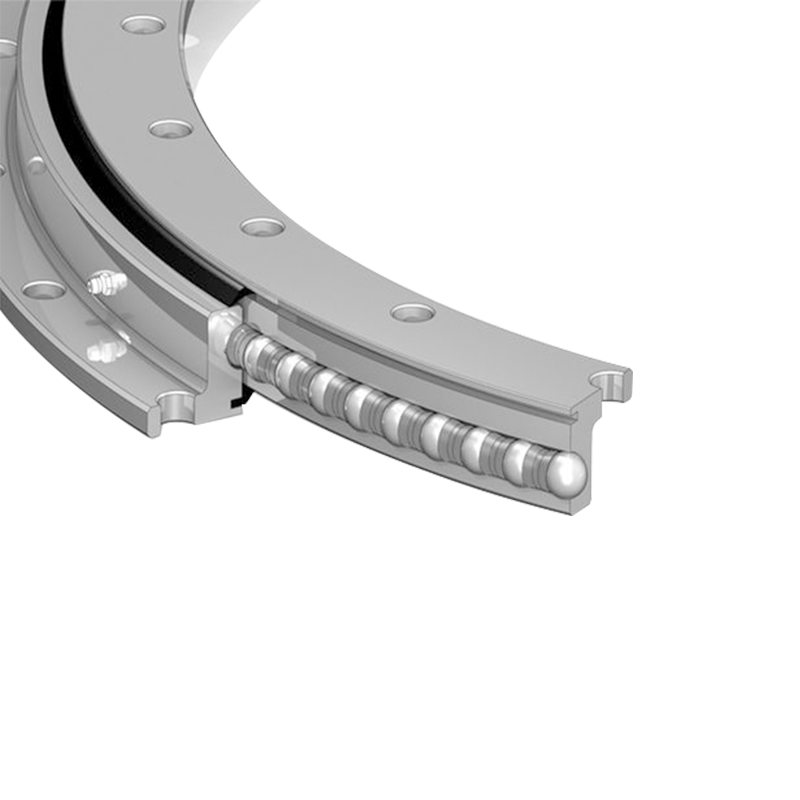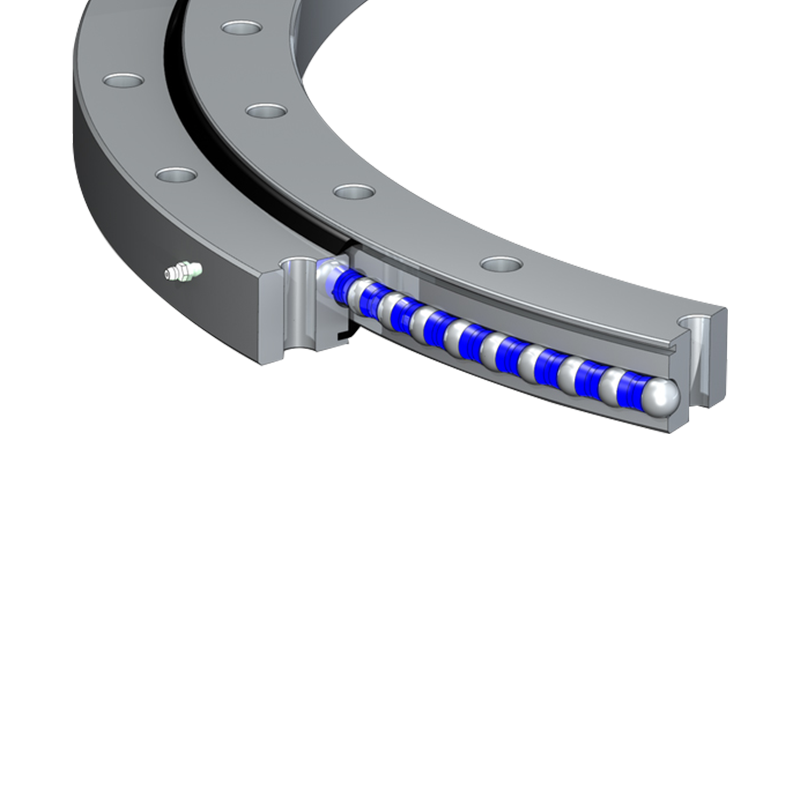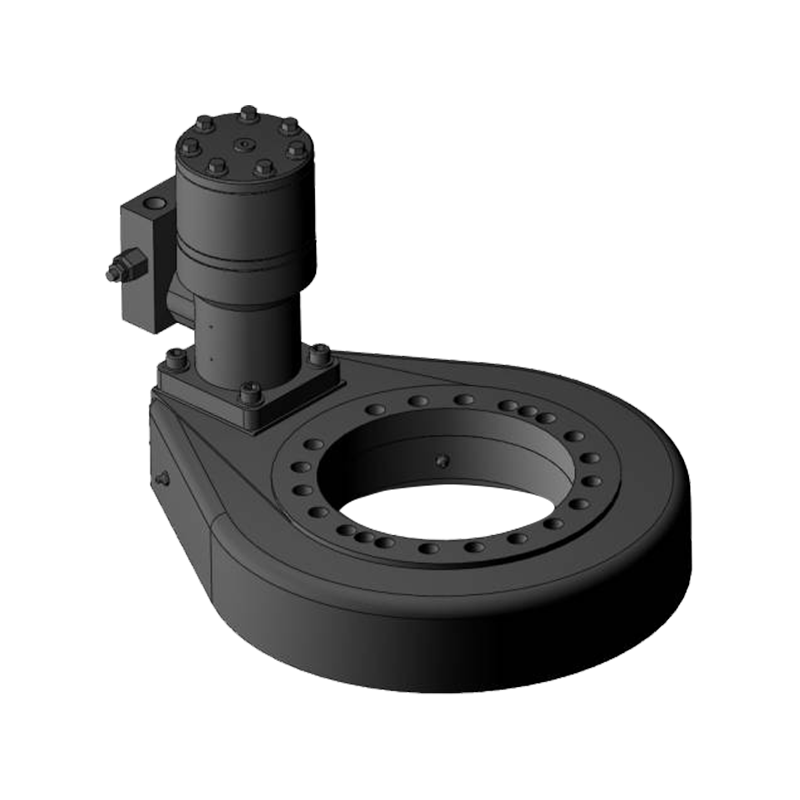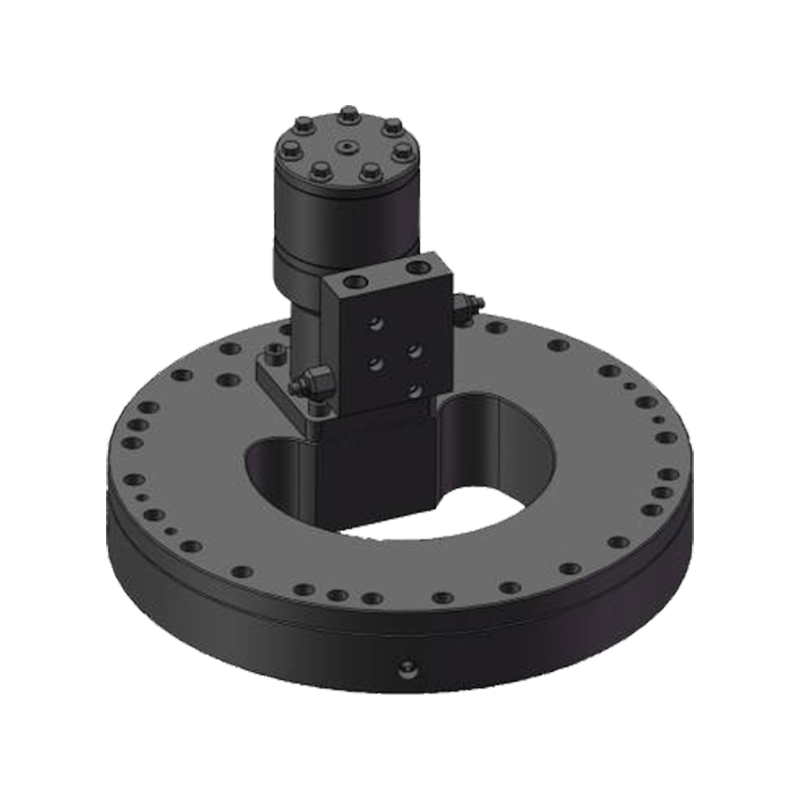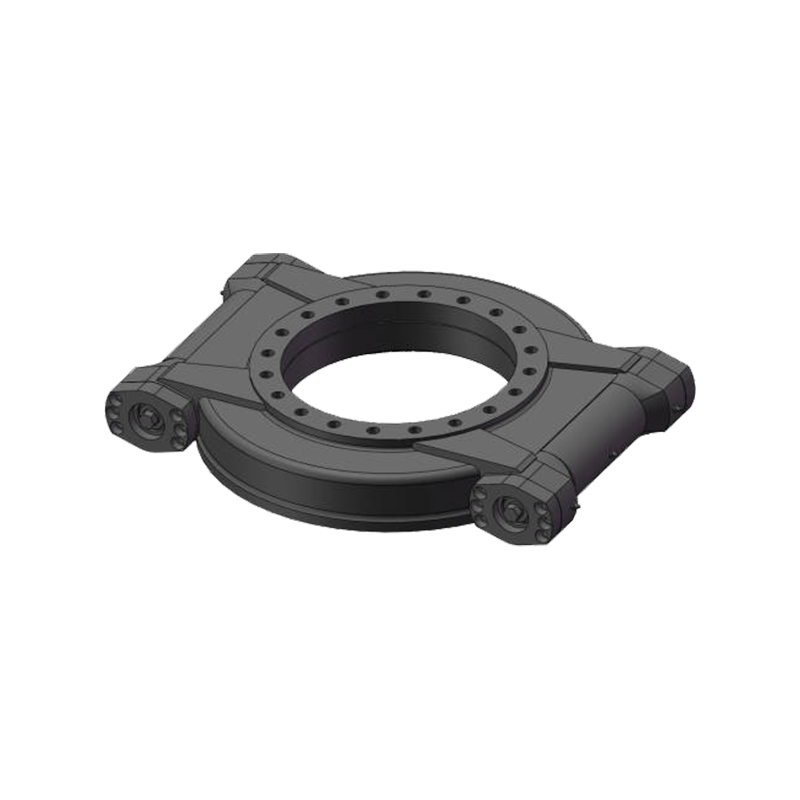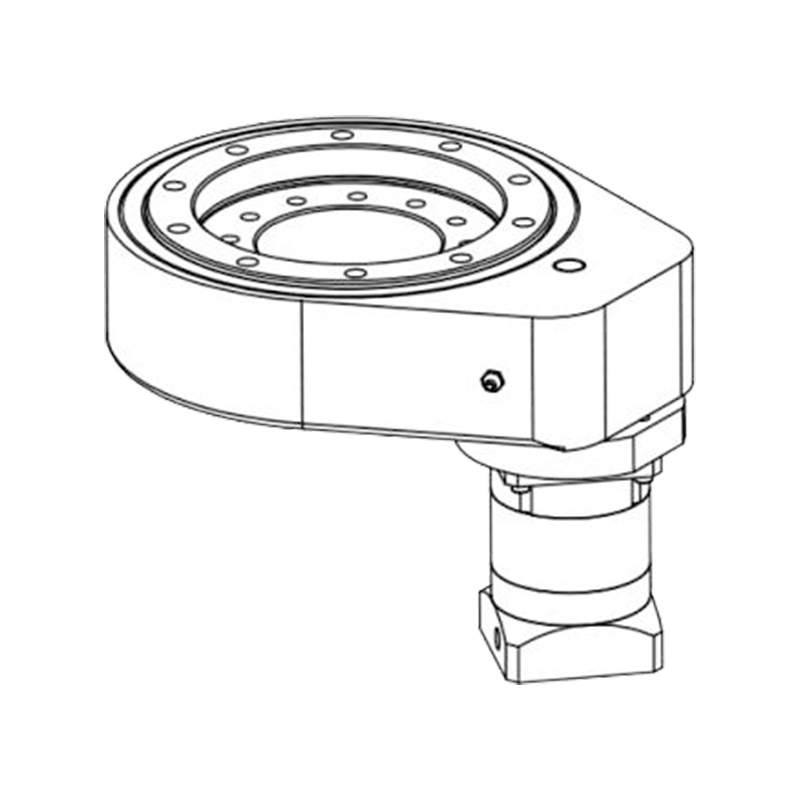Why Are Three-Row Roller Slewing Bearings (13 Series) the Ideal Solution for Heavy-Duty Applications?
 2025.05.09
2025.05.09
 Industry news
Industry news
In the world of precision engineering, especially in industries like construction, aerospace, and material handling, the performance of bearings is crucial for the efficient operation of machinery. Among the various types of bearings, the Three-Row Roller Slewing Bearing (13 Series) stands out due to its remarkable load-carrying capacity, versatility, and durability. But what makes this type of bearing so unique, and why is it becoming an increasingly popular choice for heavy-duty applications?
What is a Three-Row Roller Slewing Bearing (13 Series)?
A Three-Row Roller Slewing Bearing (13 Series) is a type of large bearing designed to support heavy loads and enable smooth rotation in a variety of applications. It is characterized by its three rows of rolling elements, typically cylindrical rollers, arranged in different orientations to handle radial, axial, and tilting moment loads simultaneously. This design provides exceptional load distribution and allows the bearing to perform under challenging operational conditions.
The 13 Series specifically refers to a design variant with a four-point contact structure, which is often used in machines or systems where high radial and axial loads are combined with rotational movements. The three-row configuration enhances the bearing's ability to withstand higher torque and forces compared to traditional single-row or double-row slewing bearings.
How Does the Three-Row Roller Slewing Bearing (13 Series) Work?
The three-row configuration in these bearings ensures that each row of rollers is designed to bear specific types of load:
-
Radial Load: One of the rows handles radial loads, which are forces applied perpendicular to the axis of rotation.
-
Axial Load: Another row handles axial loads, which occur along the axis of rotation and result from forces that push or pull along the axis.
-
Tilting Moment: The third row accommodates tilting moment loads, which occur when there is a rotational force around the bearing's axis, typically from the weight of a structure or machinery.
This comprehensive design allows the Three-Row Roller Slewing Bearing (13 Series) to effectively manage complex load combinations in one compact unit, enhancing operational efficiency and reliability.
What Are the Key Advantages of Using Three-Row Roller Slewing Bearings (13 Series)?
-
Superior Load Capacity
The 13 Series bearings are designed to handle a combination of radial, axial, and tilting moment loads, making them highly effective for applications that require the bearing to perform under high-stress conditions. Their unique three-row design ensures better load distribution, which increases the overall load capacity compared to other slewing bearings. This is particularly beneficial in industries such as construction, mining, and material handling, where equipment often operates under heavy-duty conditions. -
Enhanced Durability and Longevity
Due to their robust construction, three-row roller slewing bearings offer outstanding durability. The distribution of load across three rows of rollers reduces the stress on individual components, resulting in lower wear and tear over time. This makes the 13 Series bearing particularly suitable for heavy-duty machinery that requires high performance over extended periods, such as cranes, excavators, and turbine generators. -
High Torque Handling Capability
The three-row configuration significantly increases the bearing’s ability to handle high torques. In applications like rotary equipment, wind turbines, and port cranes, where large rotational forces are common, the 13 Series bearings are engineered to provide reliable performance even under extreme torque loads. The design maximizes efficiency and helps prevent system failures due to overloading. -
Compact and Versatile Design
Despite their ability to handle heavy loads, Three-Row Roller Slewing Bearings (13 Series) maintain a compact profile, which is advantageous when there are space constraints in machinery or equipment. Their versatility makes them suitable for a wide range of applications, including material handling systems, aerospace machinery, turbines, and offshore equipment. -
Precision and Smooth Operation
These bearings are designed for precision rotation, allowing equipment to function with minimal vibration and friction. The smooth operation is critical for industries where stability and accuracy are paramount, such as in robotics, aerospace, and medical devices. The reduced friction ensures that components run efficiently, leading to lower energy consumption and extended service life of the bearing.
Where Are Three-Row Roller Slewing Bearings (13 Series) Used?
Due to their impressive performance characteristics, Three-Row Roller Slewing Bearings (13 Series) are used in a variety of demanding applications across different industries:
-
Construction and Excavation Equipment
In large-scale construction projects, machinery such as cranes, excavators, and dredgers require robust bearings that can withstand high loads and frequent movement. The 13 Series bearings are ideal for these types of equipment because they handle multi-directional forces while ensuring precise rotation during lifting and excavation tasks. -
Port and Offshore Equipment
For port cranes, dockside equipment, and offshore structures like oil rigs, Three-Row Roller Slewing Bearings are essential for the continuous and precise rotation of heavy loads. The 13 Series bearings provide the necessary load support and durability in harsh environments, where equipment must operate under extreme weather conditions and heavy forces. -
Renewable Energy Systems
In wind turbines, where rotational forces are high, and the load must be evenly distributed across the entire system, the Three-Row Roller Slewing Bearing (13 Series) is used to support the weight and ensure smooth rotation. These bearings are designed to handle both the high radial loads from the rotor and the axial loads from the shaft, making them indispensable in wind turbine design. -
Mining and Heavy Equipment
Heavy-duty equipment in the mining and material handling industries often requires bearings that can withstand extreme loads and offer durability over long periods. The Three-Row Roller Slewing Bearing (13 Series) is widely used in draglines, shovels, and stackers to ensure smooth and efficient operation, even in harsh environments where dust, dirt, and high-impact forces are present. -
Aerospace and Precision Engineering
In aerospace applications, particularly for satellites, space exploration, and aircraft landing gear, precision and reliability are crucial. The 13 Series bearings are employed for their low friction and ability to endure the demanding requirements of the aerospace sector, providing the smooth, stable rotation needed for complex systems.
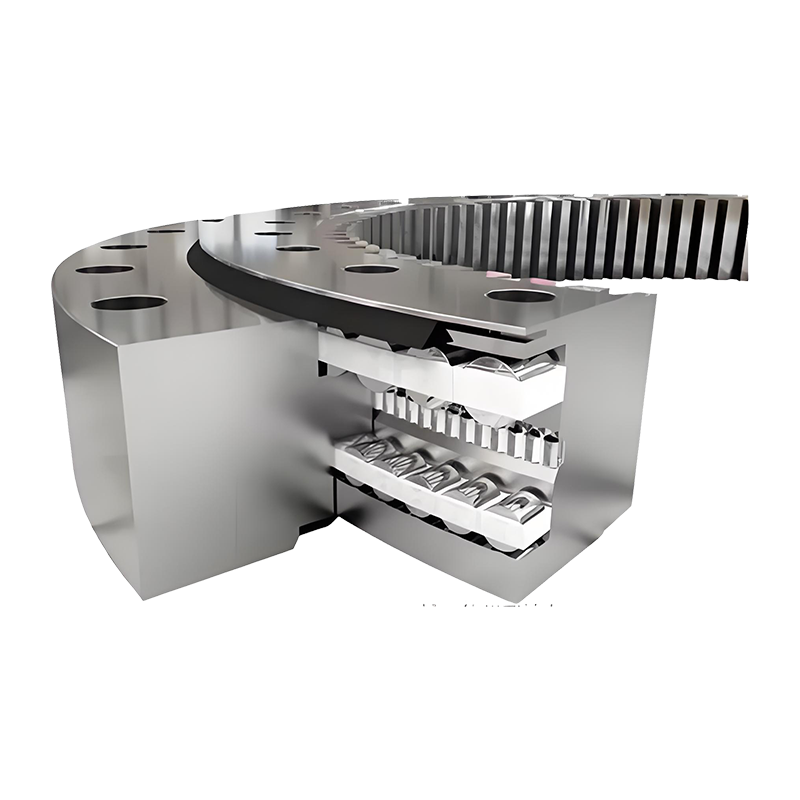
What Should You Consider When Choosing a Three-Row Roller Slewing Bearing (13 Series)?
When selecting a Three-Row Roller Slewing Bearing (13 Series) for your application, there are several factors to consider:
-
Load Requirements
The bearing must be chosen based on the magnitude and direction of the loads it will be subjected to. Whether your system primarily experiences radial, axial, or tilting moment loads will determine the specific type of 13 Series bearing required for optimal performance. -
Operating Environment
Consider the environmental conditions in which the bearing will operate. For instance, if the bearing will be used in an outdoor or offshore environment, corrosion-resistant materials and seal designs may be necessary to protect against moisture and harsh weather conditions. -
Speed and Torque
Assess the rotational speed and torque requirements of the equipment. The 13 Series is capable of handling high torques, but the speed at which the bearing operates will affect its choice of material and the lubrication requirements. -
Service Life and Maintenance
Selecting a bearing with an appropriate service life is critical for ensuring uninterrupted operation. Bearings that require minimal maintenance and offer extended durability can provide long-term cost savings by reducing the need for frequent replacements and minimizing downtime.



